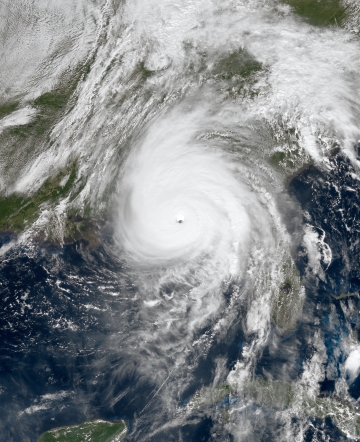721024_Ancient Hurricanes_360 px width.jpg

Hurricane Michael is the only Category 5 hurricane to hit to Florida panhandle since the year 1250. Credit: NASA
As Earth gets warmer, scientists expect to see some changes in hurricanes. There might not be more of them, but the strongest ones might be much more intense.
To better understand what might happen, scientists are digging deep into the past. They’re looking at how often especially powerful hurricanes made landfall when climate conditions were similar to what we’re seeing today.
One study looked at sediments found in a lake and a pond in the Florida panhandle. Both of them were far enough inland that they weren’t affected by smaller storms. But they were close enough to the Gulf of Mexico to be impacted by major storms.
Big storms moved sand into the lake and pond, forming layers. The details of the layers revealed the intensity of the storms. And the depth of the layers revealed when the storms happened.
The study found that monster storms—category four or five—were much more frequent from about the year 650 to 1250. That jibes with studies made at other locations. The water at the surface back then was warm, and the warm layer extended deeper than average. Winds were more favorable for big storms, too.
After that, the Gulf calmed down. Only one known category five storm has made landfall in the panhandle since that era—Hurricane Michael, in 2018.
These and other results should help scientists prepare for what we may see in the future—the potential for more monster hurricanes.

